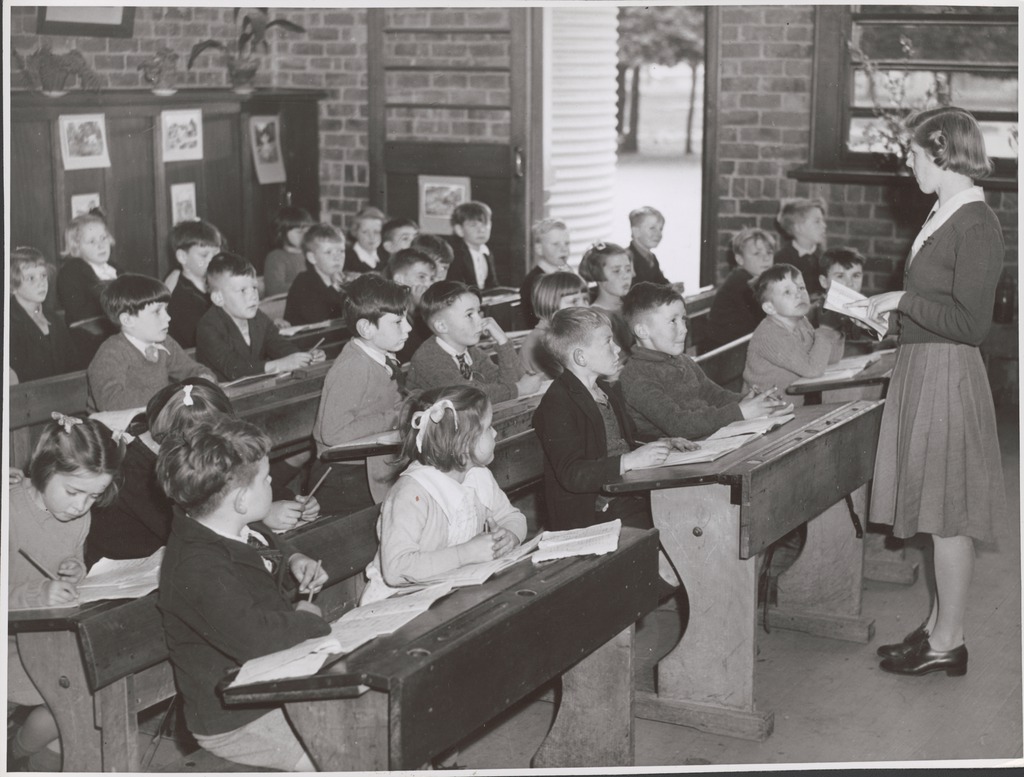
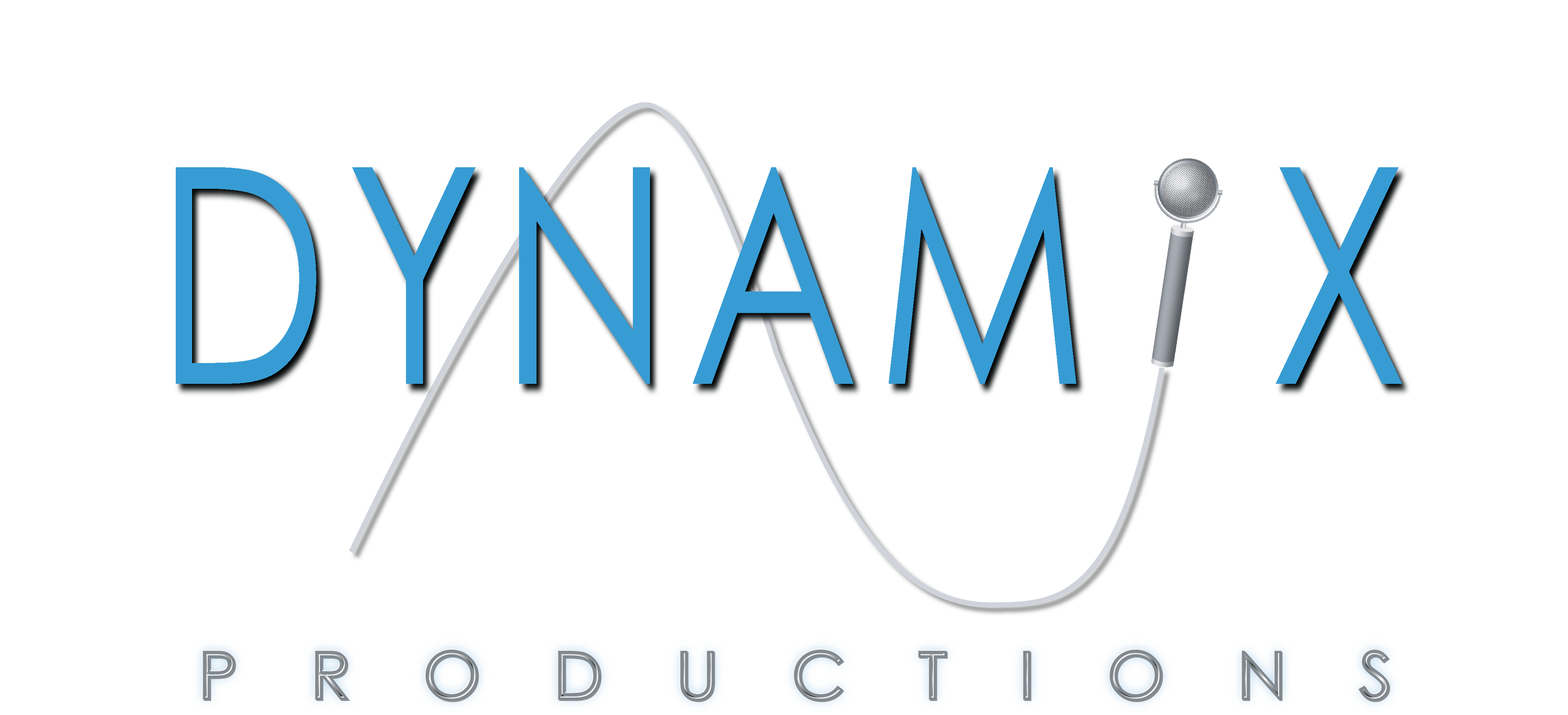
- © 2003 - 2025 Dynamix Productions, Inc. Contact Us 0





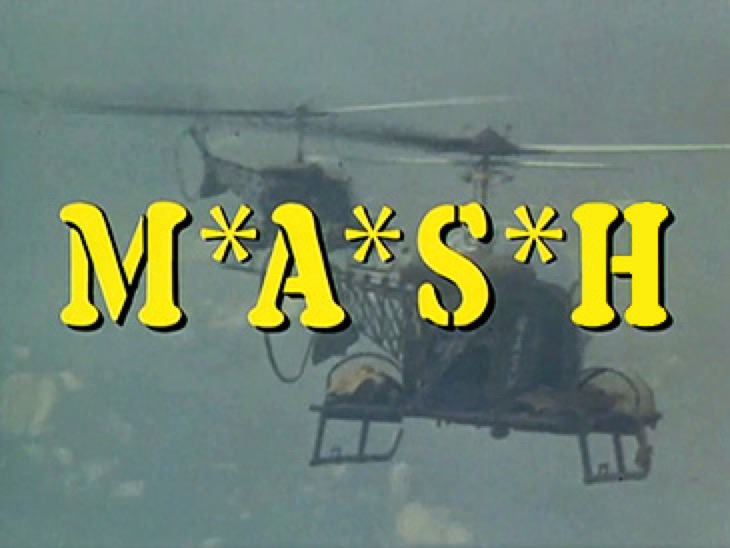

I'm a self-professed nerd and "Trekkie" so it's hard to contain my excitement with the current resurgence of Star Trek in our living rooms. My earliest memories of Star Trek are from the last season of the original series (that's TOS for you non-Star Trek nerds). During that slow march to the gallows, dimwitted network muckity-mucks sentenced Star Trek to their weakest time slot: Friday nights at 10 PM. The resulting low ratings provided the perfect excuse to torpedo the show they hated and misunderstood. But for a 7 year old who had seen 2001: A Space Odyssey and was witnessing the race to the moon, the move to Friday night was the opportunity to finally watch the show all the other nerds at school were talking about. It was a hard sell to convince my parents to let me stay up that late, but my science fiction loving Mom tipped the scales in my favor.

Think your hearing is good? That notion is destroyed when you find out about all of the other sounds you don't hear.
Read More...
Arthur Haddy may not a household name, but his achievements are. Haddy is considered by many to be the "father of hi-fi." He may single-handedly be responsible for some of the greatest consumer audio advancements of the late 20th century: High-fidelity recordings, Stereo LPs, and Cassette Dolby noise reduction.


As terrible as war is, it often brings scientific discoveries to the masses in peacetime. One such discovery from World War II is the Sound Fixing and Ranging channel, or SOFAR channel for short. It's not a TV channel, but an ocean channel. In 1944, geophysicist Maurice Ewing discovered a hidden horizontal oceanic layer about 1,000 meters (3,300 feet) deep under the ocean's surface. It's sandwiched between warm, less salty and lighter upper waters, and cooler, more salty denser lower waters. What's unique about this layer is its ability to trap sound waves and channel them over vast distances.
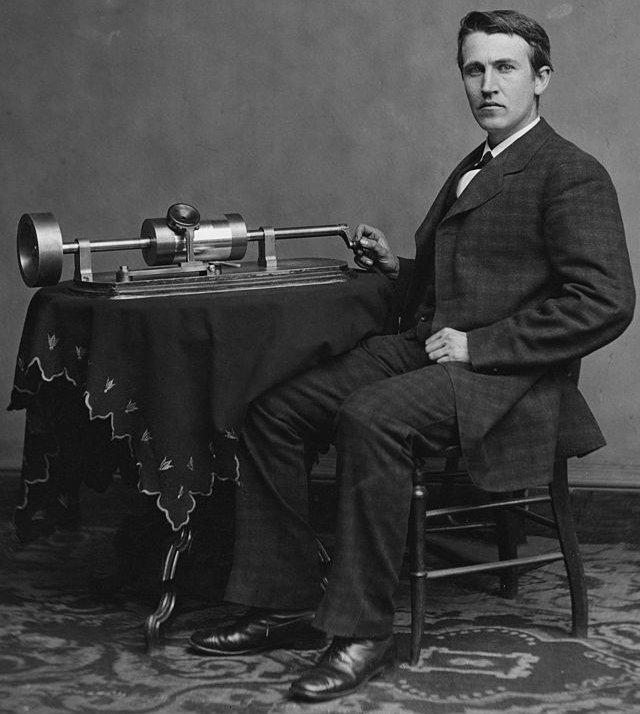
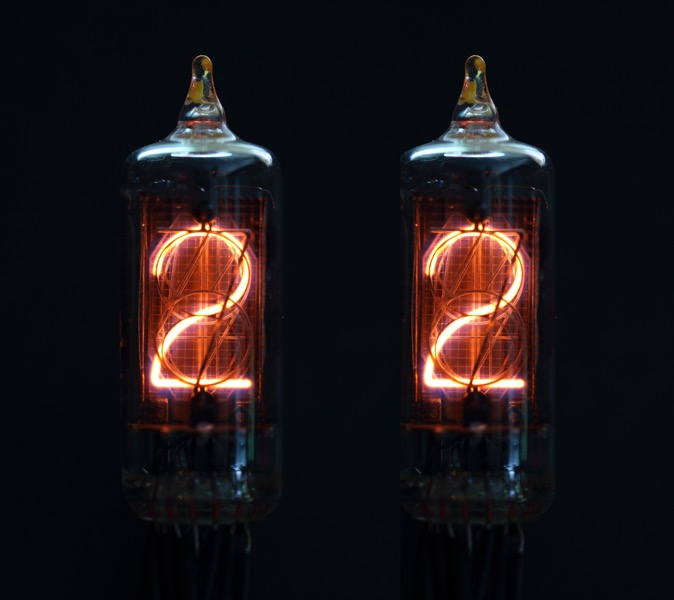
PART I
The year '22 ushers in an exciting new technology. Here's what has been said about it:
"The newspaper that comes through your walls."
"Anyone with common sense can readily grasp the elementary principles and begin receiving at once."
"It will become as necessary as transportation. It will be communication personalized. There will be no limit to its use."

"Ding-dong, ding-dong
Ding-dong, ding-dong
Hark how the bells
Sweet silver bells
All seem to say
Throw cares away"
Peter Wilhousky / Mykola Leontovich
This time of year can be joyous, especially for holiday music lovers. Christmas tunes flow out of stores and TV sets, and holiday concerts fill December's weekends. But one carol, "Carol of the Bells," may be based on a centuries-old doom and gloom song.

Captain of the 'Weser': What's it like down there, in a submarine?
Der Leitende: It's... quiet.”
Das Boot, 1981
Submarines need to be stealthy...and quiet. New technology like acoustic cloaking is on the horizon.

Mickey Mouse: Mr. Stokowski. Mr. Stokowski! Ha! My congratulations, sir.
Leopold Stokowski: Congratulations to you, Mickey.
Mickey Mouse: Gee, thanks. Well, so long. I'll be seein' ya!
Leopold Stokowski: Goodbye.
In 1940, before the world would be plunged into a half decade of devastating conflict, a larger-than-life cartoon creator teamed up with a wild-haired orchestra conductor and unleashed a fantastical film that would forever change the way we experience movies. The morning after the gala event at the Broadway Theater in New York City, The New York Times critic Bosley Crowther said, "The music comes not simply from the screen, but from everywhere; it is as if a hearer were in the midst of the music." Even with all the wondrous characters, vivid animation, and whimsical storytelling of this new film, it was the sound that stole the show.

"There is no reason that function should not be beautiful. In fact beauty usually makes it more effective."
Spock
Function and beauty can coexist, especially in headphone design.

"I hear the train a comin', it's rolling round the bend
And I ain't seen the sunshine since I don't know when."
Johnny Cash
"Folsom Prison Blues"
A train horn can be musical, loud and annoying, or even whimsical. But above all it's a communications device.

"If our condition were truly happy, we would not seek diversion from it in order to make ourselves happy."
Blaise Pascal
French mathematician, physicist, inventor, philosopher, writer and Catholic theologian
(1623-1662)
Are you working in a job that you love? Are you doing a skill that comes naturally to you? Can you imagine doing anything else? If you answered Yes, Yes, and...Yes, then you must be insanely happy. It could be healthy to daydream of doing something else, or even partake in different kinds of productive activities that are wildly different from your career. Studies of scientists have shown that the more varied their hobbies, activities, and other professional pursuits are, the more important and numerous their breakthroughs may be. Performing the same task over and over again becomes drudgery, no matter if you're a widget stamper in a factory or a recombinant DNA engineer in a lab. Our minds need diversion in order to focus when it's important.

"Music's always been at the heart of Apple. It's deep in our DNA. We've sold Macs to musicians since the beginning of Macs."
Tim Cook
Twenty years ago this month, Apple officially launched OS X. Apple finally had a legitimate PC killer that would kick the Mac vs. Windows debate into overdrive. In 2001, many studios and video editing companies were already using Macs as the foundation for their digital production systems when OS X dropped, but it literally changed the game.
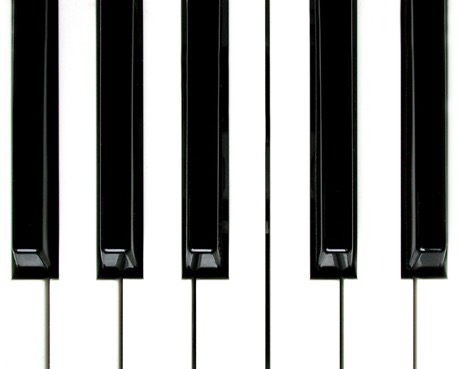
"Simplicity makes me happy."
Alicia Keys
Comedian Jim Gaffigan has a classic gut-busting routine about Hot Pockets. After expounding on the unsophistication of eating them, he envisions the meeting with the jingle writer:
Do love that jangle.
Do you think they worked hard on that song?
"What do you got so far, Bill?"
"Uh... uh... (sings) hot pocket?"
"Thats good, thats very good.
The jingle is almost as good as your "By Mennen"
Our daily life has us ingesting "jangles" and other ear worms that have become part of our subconscious. Maybe you've heard these simple sounds over and over again:
"Liberty, Liberty, Li-berty, Liberty"
"Nationwide is on your side"
"Double-A, TOOT-TOOT, M C O"
These sounds are almost as familiar as a logo like the Facebook F, the Micheline Tire man, or the Disney mouse ears. These are all trademarked logos and visual advertising devices. Sounds can also be trademarked as well.
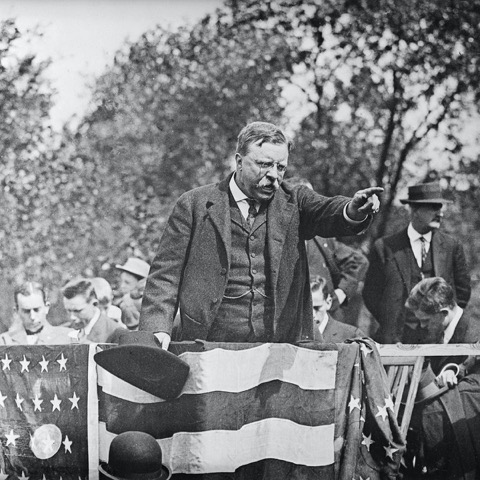
"Well-timed silence hath more eloquence than speech."
Martin Farquhar Tupper
For the first century of our nation's existence, a very select few ever heard their president speak. 130 years ago, technology changed that.
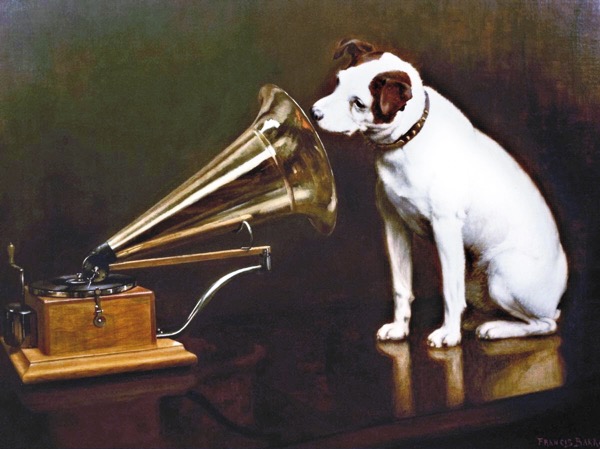
"It is easily overlooked that what is now called vintage was once brand new."
Tony Visconti
Which name will stick to a new technology? It's usually not the one given to it by the inventor.
Read More...
“In order to see birds it is necessary to become a part of the silence.”
Robert Lynd
Though we may seem as different as night and day, avians and humans may be more connected to each other than you think.

"I think reincarnation is possible. Hopefully, we all get recycled."
Christina Ricci
We all should recycle. A look at repurposing old audio gear into funky new uses. Plus find out the latest news from Dynamix Productions.

- Lt. Werner: What's going on? Why are we diving?
- 2nd Lieutenant: Hydrophone check. At sea, even in a storm you can hear more down here than you can see up there.”
Das Boot
In the near future, submarines might be using sound waves to communicate through ocean waves. Intriguing, but let's first look at the history of how submarines communicate, problems they face, and why this emerging technology may be the new wave of submerged communications.

"Call me a relic, call me what you will
Say I'm old-fashioned, say I'm over the hill
Today' music ain't got the same soul
I like that old time rock 'n' roll."
Bob Seger
Digital media is doomed to disappear at some point. Records may outlast hard drives, CDs, tapes, and other formats we haven't dreamt up yet. But what about stone tablets? I take a look at some of the oldest surviving forms of written music. You might be surprised what some of them contain.

"I got a chain letter by fax. It's very simple. You just fax a dollar bill to everybody on the list."
Steven Wright
William G.H. Finch had a crazy idea. He liked efficiency, and he liked news. He imagined a future that would merge those together for the average American. Americans like Joe and Jane. When they woke up in the morning, this crazy idea goes, a box in their parlor had just printed out the latest news onto paper with stories and pictures, ready to be poured over while eating their breakfast. Wait – that kinda sounds like the here and now. What's crazy is that this brainchild was born in 1933.
“There comes a time in a man's life when he hears the call of the sea. If the man has a brain in his head, he will hang up the phone immediately.”
Dave Barry
Something people have been overpaying for since forever are music knockoffs. In the 1800s hucksters would blatantly rip-off sheet music; early records were either re-recorded or re-pressed from originals; and illegally replicated compact discs filled up warehouses for decades. Savvy consumers usually know fake from fact, but in this digital only world, it's getting harder to tell. But help is on the way.
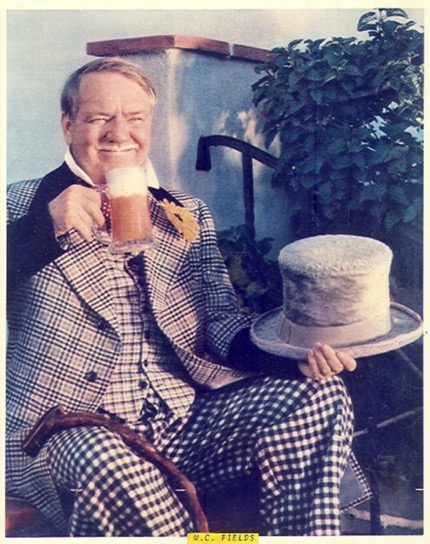
"Once, during Prohibition, I was forced to live for days on nothing but food and water."
W. C. Fields
100 years ago, a restrictive law popularized a new American art form. PLUS, find out what's been going on in the studios of Dynamix Productions.

"I got rhythm, I got music, I got my man
who could ask for anything more?"
George and Ira Gershwin
Do animals have rhythm?
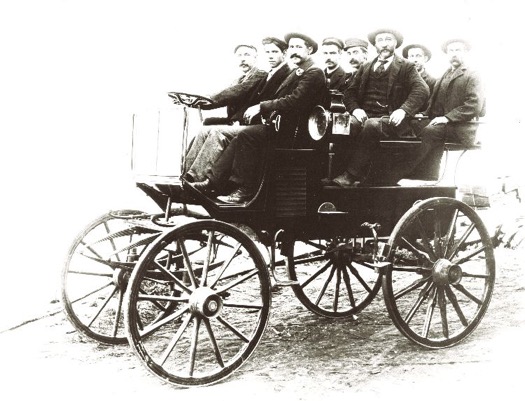
"These fellows blow their horns just to see the people jump, I believe."
Chicago Mayor Carter Harrison, 1902
At the turn of last century, the automobile was poised to overtake the horse as the preferred mode of personal transportation. But there were detractors to the coming sea change. Much as we see driverless cars as a potential danger today, "horseless carriage" opponents saw the drivers themselves as dangerous.
Read More...
"Again and again, the cicada's untiring cry pierced the sultry summer air like a needle at work on thick cotton cloth."
Yukio Mishima
Recording location audio outside can be challenging at best. The video team wants an exterior shot because architecture or a landscape in the background can add to the image. But alas, there are often unwanted sounds like cars, HVAC blowers, and other manmade annoyances that we must work around. There's one sound though that is nearly impossible to eliminate, fix, mask, hide, or yell-at-to-be-quiet. It is guaranteed to ruin almost any exterior recording in the summer: the mating song of the cicada.
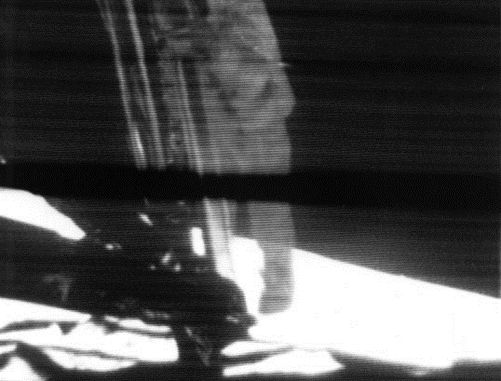
"It's an interesting place to be. I recommend it."
Astronaut Neil Armstrong commenting about the moon
Every time I hear the timeless phrase Neil Armstrong uttered while stepping on the moon, I can't help but remember the first time I heard it. It was 50 years ago at about 11:00 PM on July 20, 1969. I was eight-years-old and had fallen asleep waiting for them to get out of their strange looking space craft. So, rubbing my sleep filled eyes, I watched a white Gumby-like figure bounce down a ladder and onto the surface of another world. Then Armstrong delivered what is probably the shortest, yet most famous speech in all of human history, "That's one small step for man...." We strained not only to see him, but to hear him. "One giant leap for," he continued, "m_-_//_ _nd." What? There was static at the end covering the last word. What did he say?

"Radio is a hungry monster that eats very fast."
Tyler Joseph
Everything today seems to be sped up. We speed to work, we speed to pick up the kids, we speed home, we speed around the kitchen, we speed watch TV, we speed listen to podcasts, we speed, speed, speed...then we speed sleep so we can get up and do it all over again. And as if on cue, much of what we watch and listen to is also sped up.

"It was easier just to say it out on a tape than trying to write it because it will take a lot of writing paper in order to get it straight."
Private First Class Frank A. Kowalczyk
Long Binh Post, Vietnam, 1969
Back when it was expensive, or impossible, to call someone long distance, friends and family members would send messages on records and tapes to each other through the mail. Not only was it more affordable, it was a more personal way to stay in touch with each other and have some fun doing it. When I digitize some of these audio letters for customers, and feel like I'm transported back in time that a way that a letter can't take me.
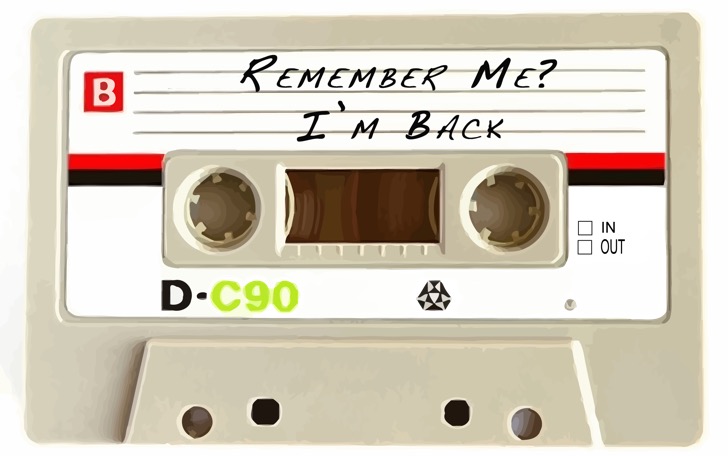
"Nostalgia is not what it used to be."
Simone Signoret
Record stores all over America will be opening their doors on April 13th for National Record Store Day. But cassettes are sneaking in through the back. These portable petite plastic packs from the past now have their own Cassette Store Day each year in October, and they're winning over some fans that also shop for vinyl. In fact, annual sales of music cassettes were up 23% in 2018, and 70% since 2016. Artists and studios are rethinking this ancient format and not only re-releasing albums popular during cassette's halcyon days, but new music as well. What's with the retro rewind?
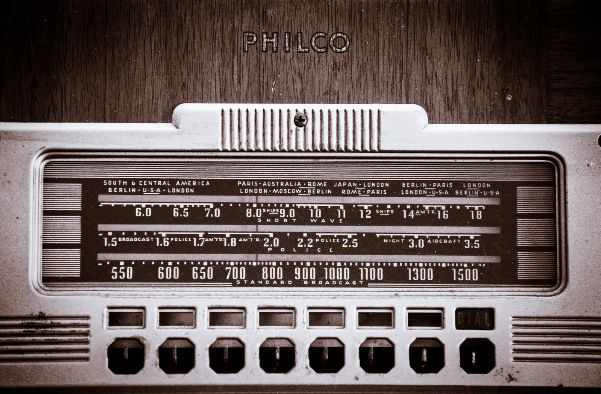
"TV gives everyone an image, but radio gives birth to a million images in a million brains."
Peggy Nooman
The recent presidential elections in Nigeria and Senegal stirred fond memories of my childhood. Specifically the "sounds" of Africa I remember growing up with. I haven't had the good fortune to go to Africa, but I've listened to it from afar. In the 1960s and 70s, radio was perhaps at its peak. AM radio stations played the hits, FM radio played the albums, and CB radios were in kitchens and cars. A lot of homes also had a shortwave radio. Today it's the internet that ties us all together. Back then, CBs connected us with our friends, AM and FM connected us with the country, and shortwave connected us with the world.

My favorite saying is, 'If it's too loud, turn it up.'
Tori Amos
You often hear the phrase "The shot heard 'round the world," referring to the first shot fired of the American Revolution in Lexington, Massachusetts. Or for us baseball fans, Bobby Thompson's dramatic game-winning home run when the New York Giants beat the Brooklyn Dodgers for a trip to the 1951 World Series. Both of these pale in comparison to the 1883 explosion of the Krakatoa volcano. Dubbed as the loudest sound in history, it was also the farthest traveled.

10:40 p.m. “I got about 2,000 college students coming from Walnut Street to 30th to Center City.”
10:46 p.m. “It’s endless, chief. Endless.”
11:11 p.m. “They’re on top of trash trucks. There is to be no one on top of trash trucks, guys.”
11:14 p.m. “We have multiple people on Broad Street swinging on light poles.”
11:20 p.m. “Climbing the trash trucks at 13th and Market.”
11:25 p.m. “I need to get the fire extinguisher out of my trunk. I got a fire on Broad Street just south of South. Someone lit a Christmas tree on fire.”
Philadelphia Police radio transcripts after the Eagles won the 2018 Super Bowl
Do you remember the old movies from the 1930s when a radio in a police car would blare out "Calling all cars! Calling all cars!" The diligent policemen would zoom away in their car with the siren screaming. The dispatcher had no idea if the radio cars heard the frantic call because two-way radios were uncommon and expensive. So from the late 1920s until after World War II, most police departments relied on their cruisers having radio receivers only. Today, police use digital radio systems that carry data, video, and other information.
"I bought a Dutch barge and turned it into a recording studio. My plan was to go to Paris and record rolling down the Seine."
Pete Townshend, The Who
I'm conflicted on the topic of recording music at home. The business part of me frets about studios losing out on billable hours. The musician part of me relishes creating art in a non-pressure environment. But the history of artists recording radio-ready songs in their humble abodes goes back further than you might imagine. Let's explore how affordable home music recording for the masses came to be, but also look back at the origins of this revolution in recording.

"Hostilities will cease along the whole front from 11 November at 11 o'clock."
Marshal Foch, the French commander of the Allied forces via radio atop the Eiffel Tower.
This week marks 100 years since the end of the war to end all wars, known today as World War One. In 1918, on the 11th hour, on the 11th day of the 11th month, 1,500 days of fighting came to an end. The armistice was agreed upon just six hours earlier in a railway car halfway between Paris and the Western Front. What's remarkable is the speed at which most troops were informed of the impending armistice. This war, like in so many other ways, forever changed the world of communication.
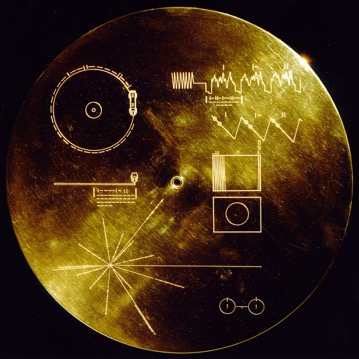
"Hello from the children of Planet Earth"
From the gold records aboard the twin Voyager spacecraft
Vinyl is the format that won't die. It'll probably still be around after humans are extinct and our sun has gone supernova. Perhaps in eons, Voyager spacecraft with the golden records aboard will meet distant stars and future vinyl lovers. But in this eon, people will not stop pushing vinyl to its limits. Mad scientists and crazy artists like putting something other than music on it - or in it. More on that later.
Read More...
"Treat the recording studio as a laboratory for conceptual thinking — rather than as a mere tool."
Brian Eno
When I was young in the...cough...60s and 70s, the only real glimpses I got inside a recording studio was through television and movies. There was a smattering of documentaries and behind-the-scenes footage of studios and radio stations. I was always straining to see the control board and tape machines, or marveling at the cavernous studio on the other side of the glass. It was absolutely riveting to peek inside them and see how a record was made. The 8-foot long mixing console was often shot through a fisheye lens. Long-haired musicians were sunk down into a couch smoking cigarettes (?) and listening to their masterpiece. And there were close-up shots of that big fat 2-inch tape rolling past the heads of the recorder.
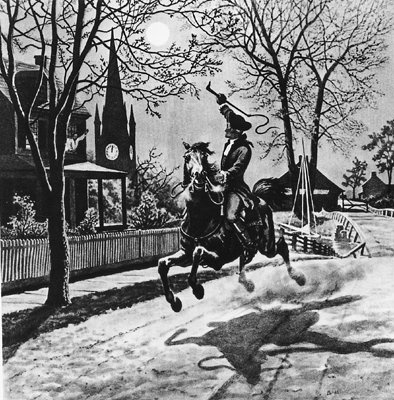
"The people will waken and listen to hear
The hurrying hoof-beats of that steed,
And the midnight message of Paul Revere."
Henry Wadsworth Longfellow
What did Paul Revere's famous midnight ride from Boston to Lexington sound like in April 1775? If you were there, you might recognize the approaching horse as a Narragansett Pacer mare. This once popular breed of horse, now extinct, was known for its ambling gait: a smooth riding four-beat gait that is faster than a walk, but slower than a canter or gallop. You might also notice the calm surroundings interrupted occasionally by crow calls, trees rustling in the wind, or the occasional farm dog barking at the stranger barreling down the rough dirt road. Just someone in a hurry.
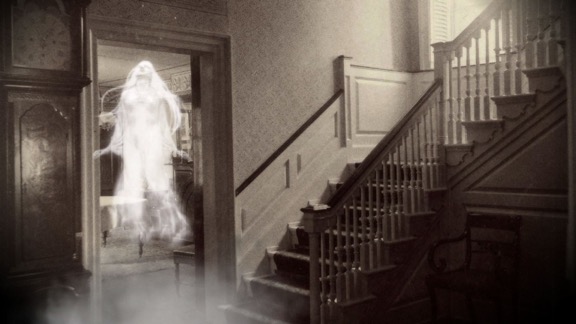
"I have been at work for some time building an apparatus to see if it is possible for personalities which have left this earth to communicate with us."
Thomas Edison, 1920
What if you nonchalantly recorded something around your house, let's say a music practice session. Then when you played it back, you clearly hear someone whispering. You didn't hear it when you recorded it, so what was it? Many unfamiliar sounds throughout history can be attributed to nature, machinery, and even hoaxes. As our post-industrial society grows, so does the list of unexplained sounds, like trumpet sounds from the sky, humming cities, and ocean whistles. The proliferation of audio and video technology has generated its own tally of the strange. Specifically, weird voices that have been inadvertently and unknowingly captured. These recordings and transmissions sound eerie but have a very unsexy-sounding name: "Electronic Voice Phenomenon," or EVP.
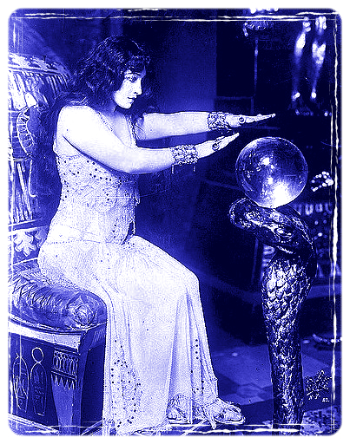
"Any sufficiently advanced technology is indistinguishable from magic."
Arthur C. Clarke
To the average person, audio can be a mysterious "myth-terious" thing. Many people don't want to admit that they are intimidated by the technical side of it, and that makes sense. The closest most people get to manipulating audio is adjusting the volume on their stereo. I bust 10 common myths about recording audio.

"The opera ain’t over until the fat lady sings."
Ralph Carpenter, Texas Tech Sports Information Director
Richard Wagner, the 19th century German composer, would have loved Star Wars. He may not have understood what a light saber or X-Wing fighter was, but he would get it - even with his eyes shut. That's because the Star Wars films are rich with composer John Williams' scores that employ a musical tool that Wagner himself was a master of: the leitmotif.
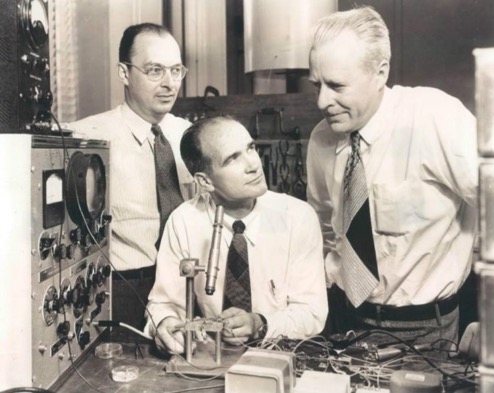
"If we knew what it was we were doing, it would not be called research, would it? "
Albert Einstein
Bell Labs was born more than a hundred years ago out of the need to improve the nascent telephone. It grew into a pure research facility that made an astounding number of scientific discoveries, improved or invented new technologies, and even influenced art and music.
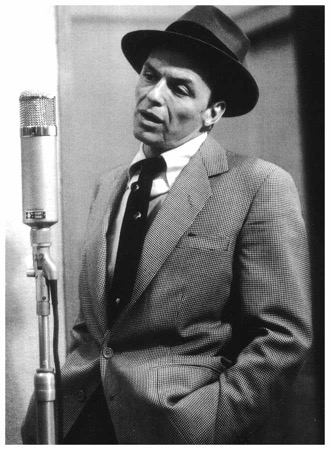
"Analog is more beautiful than digital, really, but we go for comfort."
Anton Corbijn
There's been a growing trend over the last several years to bring back the sound of classic analog gear, such as compressors and amps with vacuum tubes, ribbon microphones, and even reel-to-reel tape. Let's look at how old school charm is finding new love.

"The rockets came like drums, beating in the night."
From "The Martian Chronicles" by Ray Bradbury
Walter Gripp is the last man on Mars. All the rockets to Earth have launched without him. One evening in a deserted town, he hears a phone ringing. This creepy scenario from Ray Bradbury's The Martian Chronicles has captured the fascination of science fiction fans for decades. The reader wonders, who could it be? The scientist wonders, what would it sound like? We're about to find out...maybe.
Read More...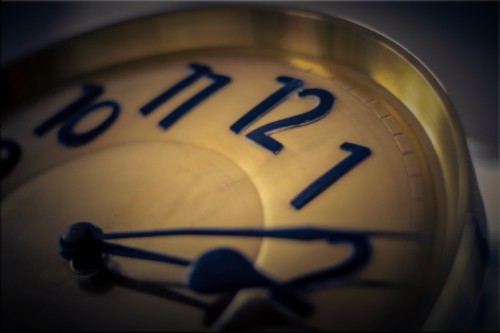
"Shh! Listen! Someone's coming! I think -- I think it might be us!"
J. K. ROWLING, Harry Potter and the Prisoner of Azkaban
Imagine if we could time travel without changing history. If we could go back 50 or 100 years would people view our technology as magic? If we were visited by time travelers from the future, would their technology be magic to us?

"Cooking is like music: you can tell when someone puts love into it.”
Taylor Hicks
The transition from mono to stereo music recordings in the late 1950s had its challenges. Find out how Rudy Van Gelder and other recording engineers worked out the details.
Read More...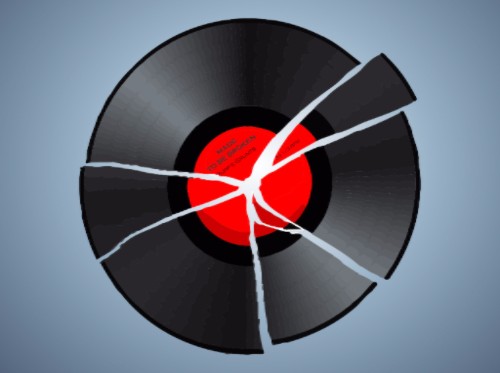
"Every crowd has a silver lining.”
P.T. Barnum
126.4 I think that's what will be inside a little oval sticker that I'm going to put on my bumper. I see "26.2" bumper stickers that marathon runners proudly display. Colorado mountain climbers have "14er" stickers. A lot of dads are number "1." Then what's so special about 126.4? It used to be a number for Kings, but now it's a number for Cats.
Before I start to sound like a broken record, let me back up and tell this story from the beginning. Team Cornett wanted to raise the profile of UK Health Care and their close association with UK Athletics, so they came up with a plan to get the attention of a sports crowd. There's no better place for a hyped up crowd than Rupp Arena in downtown Lexington. With nearly 24,000 people, its been known to get really loud in there. It would be the perfect place to try and break the world record for the loudest crowd roar at an indoor sports event. And what basketball game would have the biggest and loudest crowd? A made-for-ESPN-TV marquee matchup: Kentucky versus Kansas.

"The key to this plan is the giant laser. It was invented by the noted Cambridge physicist Dr. Parsons. Therefore, we shall call it the Alan Parsons Project."
Dr. Evil
Austin Powers
Here's something that will blow your mind and make you paranoid at the same time. Someone can listen to your conversations in your house or office from hundreds of feet away using light. The "light" is a "laser," and it's bounced off a window pane to detect sound vibrations. It's hard not to imagine Dr. Evil, played by Mike Meyers, air quoting "laser" when we mention that word. The theory was first proposed in the 1940s, but had to wait until lasers were actually invented in the 1960s to gain traction. By the 80s, the Cold War had us and the Soviets spying on each other using "lasers."
Read More...
“Square in your ship's path are Sirens, crying beauty to bewitch men coasting by;
woe to the innocent who hears that sound!”
by Homer in The Odyssey
I live on a busy street. My house sits roughly between three hospitals - all with helipads and emergency rooms. That's good for me if I have a really bad day, but my poor cat thinks wolves are after her whenever someone else is having a really bad day. I'm talking about the incessant sirens going up and down my street. And they seem to be getting louder – they penetrate my windows and brick walls with even more ferocity than ever before. It turns out that I'm not imagining this, because some emergency vehicles are now employing something called "low frequency system," or LFS. I call it "Loud F*@#$%^& Siren."
In addition to the regular high yelp of a siren, you may have noticed a lower yelping sound that seems to penetrate your car and go straight through your chest. That emergency vehicle has a secondary siren system that emits powerful omnidirectional bass tones from about 200-400 Hz. In this range, sound is "felt" more than heard - up to 200 feet away. These frequencies can penetrate auto glass and metal, wood and brick buildings, and human flesh and bones.
The sellers of these types of sirens call them "intersection clearing" devices. They didn't make them just for fun, there is a real need for something to gets more attention. We live in a world of super-quiet cars, people with earbuds playing music loudly, pedestrians hunched over their phones while walking into fountains, and general inattentiveness. City dwellers in particular have learned to tune out the pervasive sirens that scream past them daily. There have been countless accidents, some fatal, at intersections while an emergency vehicle is on a Code 3 run. Police and fire departments are continually searching for solutions that make emergency runs efficient and safe for everybody, but it's an uphill climb.
This latest solution of using enhanced low frequency sounds is not without its controversy. Opponents complain of ever increasing noise pollution. They also bring up the lack of legislation regarding the use of LFS. For instance, many police and fire departments that are purchasing the LFS units are small towns without the traffic problems of big cities. People who live or work in cities that employ LFS sirens are subjected to particularly invasive sounds while inside a building, even on the 20th floor.
And these loud and low tones aren't just an annoyance, they can be harmful to your health. Noiseoff.org says "The intense sound caused by the [LFS] siren easily triggers an involuntary stress response commonly known as 'fight or flight.' This results in the secretion of adrenaline, with ensuing spikes in cardio-respiratory rates, muscle tension, and elevated blood pressure."
But let's not forget about the police officer or ambulance driver who is sitting on top of this thundering klaxon. At ten feet away, roughly the length of a pick-up truck, these sirens emit a powerful 123 dB-SPL. Let me put that in context for you. If you were standing at the goal line of a football field and a jetliner took off 65 yards away, you probably wouldn't notice that the jet was slightly louder than the siren because you would be screaming in agony from the pain. Makers of these LFS sirens don't recommend users subject themselves to more than ten seconds of the bone rattling sound, so they usually build in a failsafe cut-off time of the tone. But once it ends, nothing stops the operator from sounding it again and again.
Clearly, there needs to be more engagement between the public agencies and the public they're supposed to protect. An effort to educate both the protectors and the protected will only help everybody in the long run. These LFS sirens are getting the attention of people in the way, but at what cost? Will their overuse cause heart attacks, panic attacks, or deafness? If people then start to ignore these, will the police come up with something even louder? Like something that goes to 11?

"I used to judge the quality of music by whether I could make a 90-minute cassette and not repeat any artists."
John Hughes
What? Another old audio format is making a comeback? Yessiree! If you want to be hip, then dust off your old Sony Walkman. But like me, you've probably dumped all your old cassettes along with your floppy disks and Trivial Pursuit. These days, my pocket can carry the same amount of music that drawers and drawers of cassettes can.
Read More...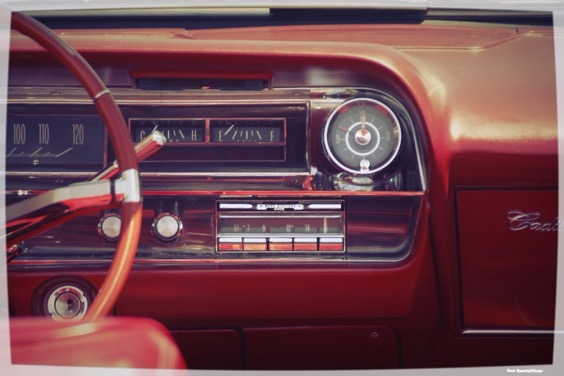
"I hate modern car radios. In my car, I don't even have a push-button radio. It's just got a dial and two knobs. Just AM."
Chris Isaak
Maybe you haven't noticed, but AM radio has pretty much sucked the last twenty years or so. Maybe you didn't notice because you weren't listening. A lot of people aren't, and the FCC is out to change that. The FCC? You bet – this isn't your father's FCC. We're so used to hearing "FCC" and "restrictions" in the same breath, that broadcasters were pleasantly surprised last October when the FCC announced an "AM Revitalization" initiative.
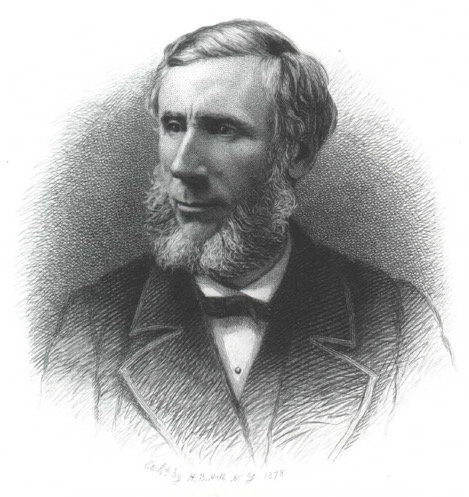
"I throw more power into my voice, and now the flame is extinguished"
Physicist John Tyndall, 1857
There's been a recent breakthrough in fighting fires - using sound waves to extinguish flames. Since 1857, scientists have known that sound waves could put out a flame, but they weren't exactly sure why.
Read More...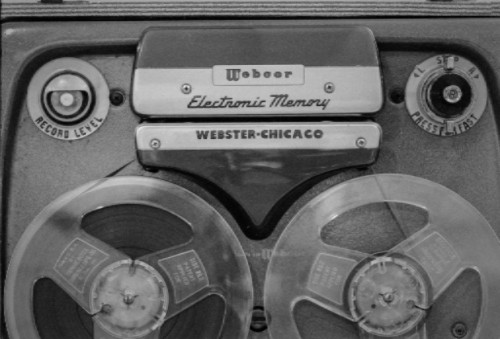
"As so much music is listened to via MP3 download, many will never experience the joy of analog playback, and for them, I feel sorry. They are missing out."
Henry Rollins
There's a growing trend in the music business - recording to reel-to-reel tape. Wait, I thought we got rid of that when we went digital. The truth is, it never went away. Much like the recent boom in sales of records and film, reel-to-reels are gaining new fans and bringing back old ones.

"I hope I inspire people who hear. Hearing people have the ability to remove barriers that prevent deaf people from achieving their dreams."
Marlee Matlin
Did you know that more than 37 million Americans aged 18 or older have some kind of hearing loss? And 30 million Americans aged 12 or older have hearing loss in both ears? With a media-rich society, that makes listening to narration, dialog, and speech in general difficult for them. Before 1972, anyone hard of hearing had to watch television with the volume turned up.
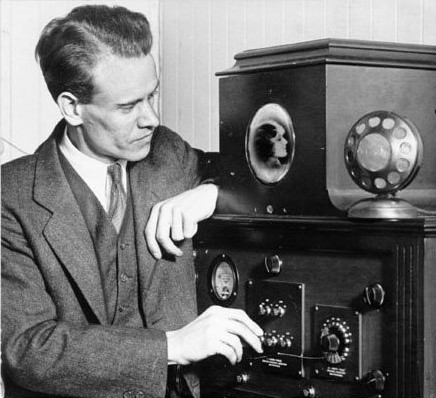
"If it weren't for Philo T. Farnsworth, inventor of television, we'd still be eating frozen radio dinners."
Johnny Carson
Eighty-six years ago, three musical tones, "G-E-C," were played on a fledgling network of radio stations. What started as a technical cue for local stations, has become an instantly recognized trio of notes woven into the American identity.
Read More...
"They number girl spies different. She's what you call a 36-23-36."
Max Baer, Jr. as "Jethro Bodine"

"Podcasting - I swear to you - on its worst day, the podcasts are better than our best films. Because they're more imaginative, and there's no artifice, and it's far more real."
Kevin Smith
Modern podcasting has now been around since about 2005. The roots go back much further, into the 1980's in fact. The idea of subscribing to an internet-delivered audio service dates to the early 1990's. But it wasn't until portable devices, such as the iPod, came onto the scene that it really took off. History shows that portability drives popularity – the battery-operated radio, the portable record player, the audio cassette, and the funky 8-track. I remember the iPod being described as a digital "Walkman," even though poor Sony already had moved beyond the cassette into portable digital players.
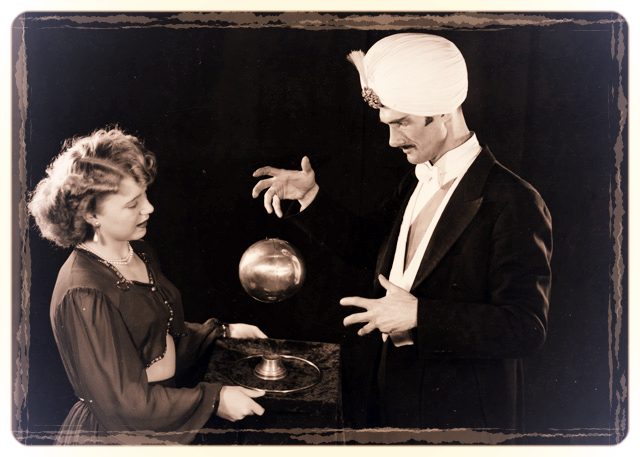
"Science is magic that works"
Kurt Vonnegut

"If a tree falls in the forest, and hits a mime, does anyone care?"
Gary Larson
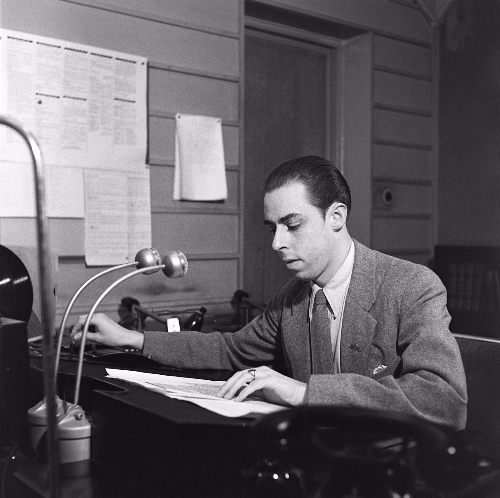
"In radio, they say, nothing happens until the announcer says it happens."
Ernie Harwell
Legendary Detroit Tigers Announcer
There was a time when Americans who wanted to sound important and upper class spoke with a half-American, half-British accent. They call it mid-Atlantic, presumably because the accent lands somewhere in the middle of the ocean between our countries. It was dominant in movies, on radio, in theaters, and on early television. Today, it sounds pompous. Some early practitioners were Franklin Roosevelt, James Cagney, Orson Wells, and Katherine Hepburn. Some more contemporary holdouts were William F. Buckley, George Plimpton, and Jacqueline Kennedy Onassis.

"Words mean more than what is set down on paper. It takes the human voice to infuse them with deeper meaning."
Maya Angelou

“Even if you're on the right track, you'll get run over if you just sit there.”
Will Rogers
It's said that when an early motion picture was first shown to the public, women fainted and men ducked from an approaching train. The director made a bold new decision that would alter the course of filmmaking for the next century. Instead of just placing the camera in front of all the action like an audience watching a stage, the director moved the camera to a new position - within the action - to create perspective. There were more changes on the way. About a hundred years ago, the first color and 3D films were being created. In an Avant Garde era when artists were distorting reality, most filmmakers were trying to recreate reality and immerse the viewers into it.
Read More...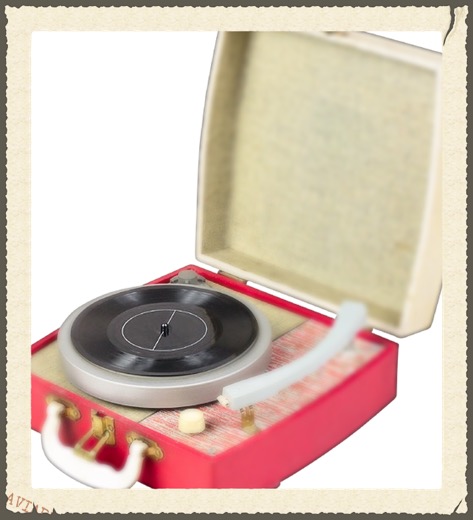
The new generation is discovering what the old generation stopped loving - LPs. LP sales are the highs they’ve been in 22 years. Records aren’t just for hipsters anymore, everyone, including the older generation that gave them up, are groovin’ to them.
Read More...
“Within You Without You,” The Beatles
1967
How would you describe a sound to someone without using descriptors that are unique to sound, like: loud, bassy, shrill, whining, atonal, or noisy?
Not a problem, because we most often describe a sonic experience with words related to our other senses: sharp, warm, angular, raspy, piercing, even, warbling, soft, smooth, or flat.
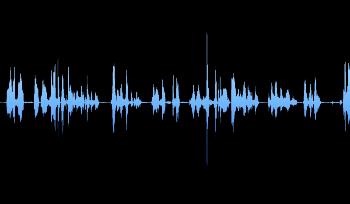
It's often assumed that someone with a visual impairment, such as blindness, has better hearing. While this person may collect more audible information than most of us, there is no physical advantage over someone with sight. That information is collected by the brain. That person has trained themselves to rely more on the remaining senses.

Most of you reading this know us at Dynamix for creating new sounds with new technology. But did you know we also like to resurrect old sounds? Just twenty years ago, magnetic tapes and records were standard formats we worked with everyday. Now, they're just "antiques" and items taking up space in a closet. But many people are discovering (or re-discovering) analog, and they want it in digital form. For many years, we have been helping people resurrect old recordings by transferring their tapes and records to CD. Many of these analog recordings are of family, but others are important historical archives.
Our main challenge when restoring an old recording is improving the condition of the archive enough to capture an audio signal. Scratches on an old record are obvious, but many are warped, dusty, oily, and even muddy. Reel-to-reel tapes often exhibit "shedding," where the magnetic coating flakes off the acetate base as you play it, destroying it forever. Although not all recordings are recoverable, we've had great success with most. Tapes can be "baked," or slow-heated and slow-cooled to temporarily restore the adhesive that holds the magnetic coating on. Records can be cleaned, and if warped, flattened.
We have a multitude of analog equipment for transferring old recordings, including:
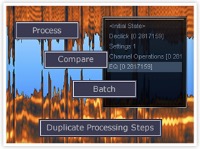
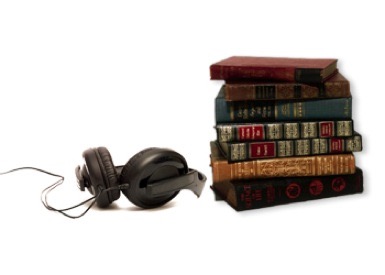
Audio books, or what used to be called "books-on-tape," are gaining in popularity now that listeners can easily download them to their portable listening device. In the old days, you had to fumble with a box of tapes or CDs. Now, thanks to software like iTunes, you put a whole library in your pocket. The ease of getting an audio book is exponentially easier with on-line stores like iTunes, Amazon, and Audible. Just like the print market, there's an audio book for just about anything. If you want a book for self-help, do-it-yourself, travel, humor, history, etc., it's out there. And the line between audio books and audio programs is dissolving.

Okay, this is not a gear-geek column (but you fellow geeks can find a little tech talk in the next section "Dynamix Tech Notes"). But rather, a primer on why and how we make our choices for certain audio production equipment. As a part-time educator, I'm often asked by budding filmmakers, "What kind of equipment should I buy?" It's often paired with "How much will it cost?" It's a valid question.

The volume is getting turned down on television commercials. What does that mean for you, the producer or advertiser? Well, you can still scream all you want, but you just won't be louder than the latest installment of a Fast and Furious movie.

Independence Day reminds me about fireworks. Which reminds me of explosions. Which remind me of sound effects. I'm not necessarily thinking of sound effects when I'm watching fireworks, because I'm usually in the moment. But we've all experienced that anticipation of waiting for the next explosion when we see a faint streak of light climb up to the heavens and hear a little bit of the sizzle from the propulsion. A momentary silence...and then BOOM! Ooooh! Aaaah! Laughter, applause.

A jam-packed field. Each running neck-and-neck trying to lead the pack. The whole mass moving toward the finish line with breathtaking speed. Finally it ends, but it's too close to call!!!
No, it's not the Kentucky Derby. It's an overcrowded commercial with too much information that's been crammed into 30 seconds. Sound familiar? We all want to get our message across, but we often say too much. I'm guilty of it (as many of my friends would attest).

With the recent college basketball championships engulfing our March, it's easy to see what it takes to make a winner: teamwork. Okay, I know it sounds cliché, but it's the same in production. If a coach only relies on one player, then the team will eventually fail. Everyone sees the other players just standing around and "phoning it in." What would you think? "Good player, but this team could be so much more." What about "Good video, but it could be so much more."
Read More...
Most productions that go through our studios at Dynamix have some kind of music. It can be a jingle, custom, or library ("needledrop") music. A jingle can be great for branding your client over the long term. But, it's usually the most expensive item in your production budget, sometimes the only item. If you're producing a film, custom music can give cohesiveness to the soundtrack, but can also be expensive - sometimes as much as 15% of your total budget. That's why many projects that have a quick turnaround or tight budget lean towards using library music.
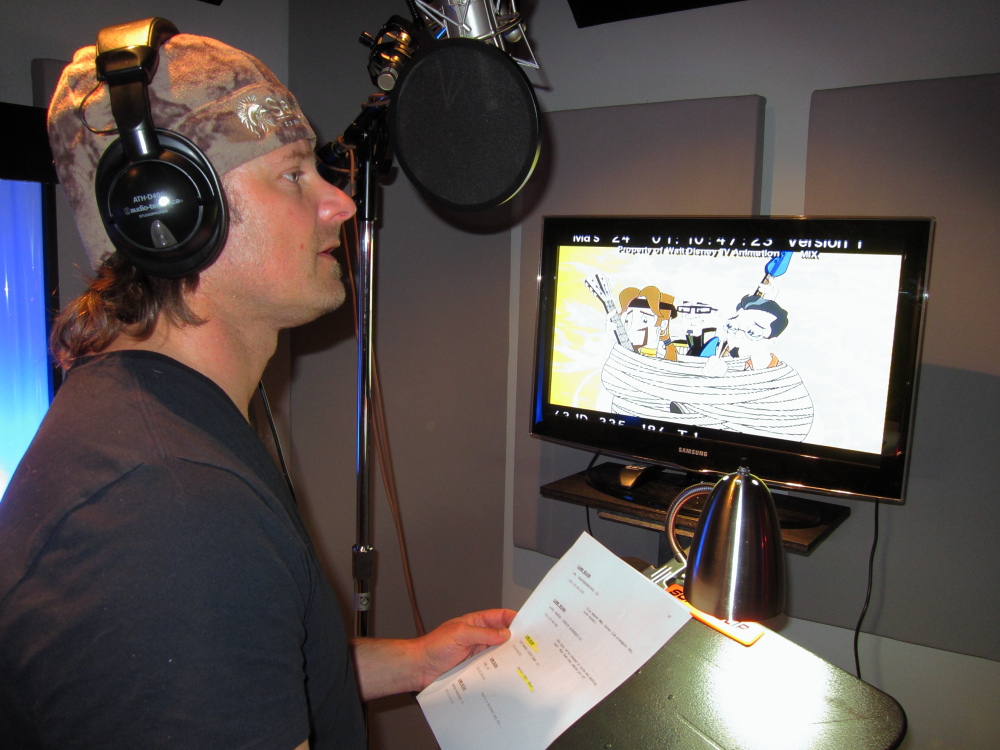
Replacing dialog in video and film has come a long way since Clint Eastwood had to dub dialog for his spaghetti westerns. Whether it's noise in the original track, a changed or new line, or even a different performance, replacing dialog on programs and films is commonplace today.

Being in the "Horse Capital of the World," we surely have enough experience to know that a horse sounds much like it did 150 years ago. However, back then a horse's role was very different than today. In a new documentary, "Unsung Hero: The Horse in the Civil War," produced by Witnessing History, LLC for HRTV (Horse Racing TV Network), the role of the horse in the American Civil War is explored in-depth with rarely-seen photographs, documents and artwork. To a sound designer's delight, there are simulated battle scenes, troop movements, and other war action.

One often overlooked service that Dynamix Productions provides on a regular basis is ISDN (see below for a more detailed explanation). It's a real-time digital audio connection that allows two or more studios to deliver near CD audio quality to each other simultaneously. We regularly connect with other studios around the world for voice-over sessions.
Read More...